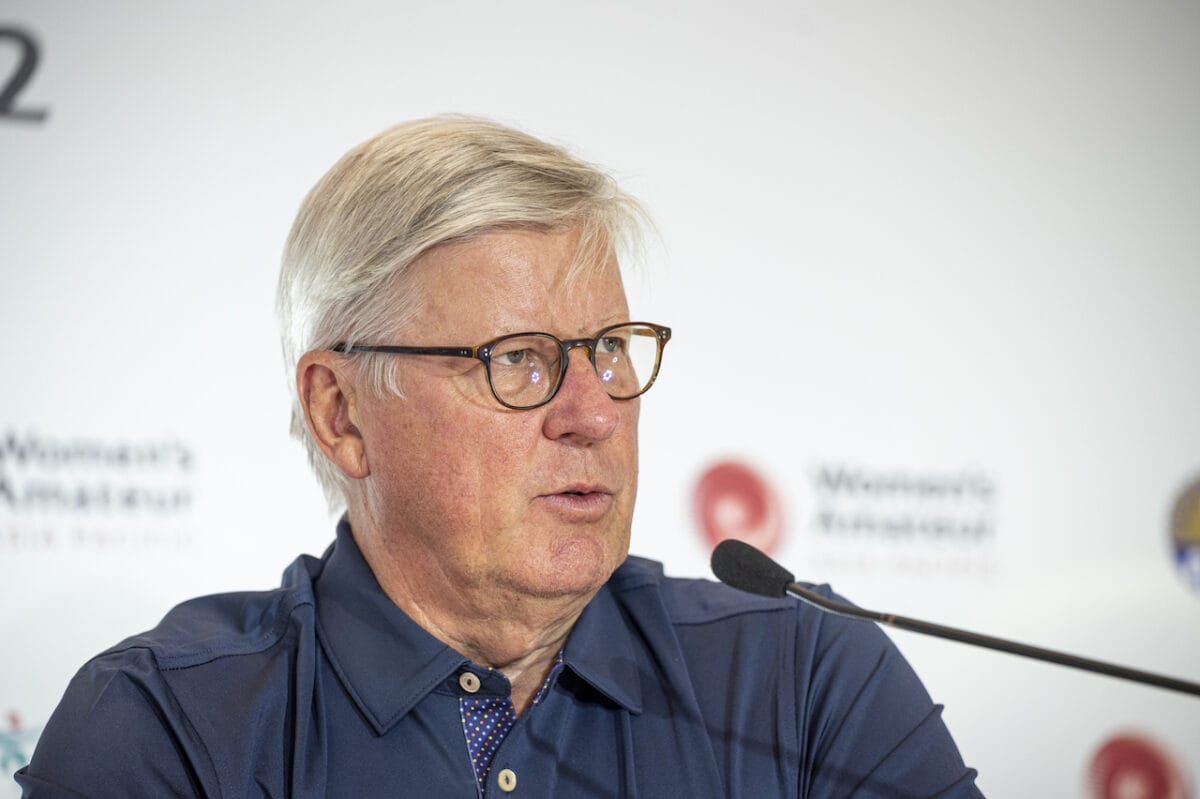The R&A and USGA’s proposed Model Local Rule (MLR) was announced this morning, giving competition organisers the option to require use of golf balls that are tested under modified launch conditions to address the impacts of hitting distance in golf, and in a joint press conference this afternoon, they expanded on the reasoning behind it and what the desired impact will be.
Key to the proposed implementation of the rule would be that recreational golf would not be affected, and that the MLR would come into play only for elite amateur and professional events, and at present, it is unclear whether the PGA of America, the PGA Tour, the DP World Tour, the LPGA or other major organisations will follow suit.
The changes will not come into play before January 1 2026, and R&A Chief Commissioner Martin Slumbers has confirmed that the MLR will apply to the golf ball only, citing three reasons for excluding modifications to the actual clubs themselves and why this would apply at elite levels only.
“We heard three key pieces of feedback,” Slumbers said. “First, Mike [Whan, USGA CEO] has already mentioned, but let me repeat. Please do not do anything to affect the recreational game. Golf is doing well, and we don’t want to undermine this.
“The second piece of feedback we heard is an MLR on the driver would impact multiple clubs, and the unintended consequence could be 3-woods or other clubs that perform better than drivers and thus multiple clubs would need changing.
“The third piece of feedback we heard is there is too much change proposed and it’s too complex.”
The R&A and USGA, through recent distance insight reports, gave made no secret of the fact that they felt that the distance that elite level players were hitting the ball had gotten out of hand, and clearly feel that simply putting the brakes on at the current specifications will not be sufficient in years to come.
“Well, I think when you look at trying to make a change,” Slumbers explained, “and a point that Mike and I feel very passionately about is we’re not so much trying to solve a problem today; we’re trying to solve where we believe it’s going, and there is no doubt in our minds that the game is going in that direction, and will continue to move upwards. There is no evidence in history to prescribe otherwise, and by taking a step back here, we give ourselves some headroom for the next 10 to 15 years, depending on how the game develops.”
“The whole “let’s just stop it here” has been tried before,” Wahn added, “and that’s how we get ourselves to 2023.”
The intended rollback will simply reduce the distance the ball travels through the air based on optimal launch angles and high club head speeds, meaning that shot dispersion shouldn’t be affected.
“I think it’s also worth saying that by sticking with the game formula which has been tried and tested,” Slumbers adds, “the longest drivers today will still be the longest drivers. The best drivers of the ball will still be the best drivers of the ball, and I still think that we’ve kept the integrity of the performance.”
Both Slumbers and Wahn admit that it’s too early to say whether the other major organisations will adopt the MLR and enforce use of the reduced-distance balls, but both make it abundantly clear that the respective R&A and USGA Championships will be putting the rule into play, meaning that there’s the potential for players to be required to use different balls on regular PGA Tour events and for the US Open and Open Championship.
Asked if the MLR would come into effect in the women’s game as well, Slumbers suggested that distance was not an issue in the women’s game at present, therefore, the proposed MLR would be for men’s golf only.
“I think at this point there isn’t a distance challenge in the women’s game,” he said. “You’re certainly seeing changes in the women’s game where more power, longer distances is coming in than maybe even five years ago. But at the moment there’s plenty of headroom on the golf courses that we have for the women’s game.”
That many golf courses – some of them iconic venues – have become or are fast becoming obsolete for the elite professional game has long been one of the strongest arguments for bifurcation, and though the MLR will certainly safeguard against this to a degree, as R&A Chief Technology Officer Steve Otto points out, there are other concerns regarding sustainability.
“I don’t see those as two opposing topics,” when asked if it was to protect golf courses rather than reintroduce the emphasis on shot making. “I see them as sympathetic, and we are looking at, as Thomas [Pagel, USGA CGO] said earlier, the sustainability aspects of this, the footprint of golf courses, the uses of water, the uses of pesticides, et cetera, but also looking at protecting the integrity of the sport to ensure that distance doesn’t become too dominant in determining success.”
Both Slumbers and Wahn were reticent to suggest that certain golf courses may come back into the reckoning for hosting their respective major championships, with Wahn pointing out that the USGA’s host venues have been set in concrete already and that it would be some time before decision makers would have to take the new variables into account.
“Fortunately or unfortunately,” Wahn shrugged, “you can look online and see where we’re going to be playing for the next 15 or 20 years, so I could make up an answer to that question, but you know where the U.S. Open and the U.S. Women’s Open are going to be played for the next decade if not 15 years, so those choices have been made for us.”
























Leave a comment